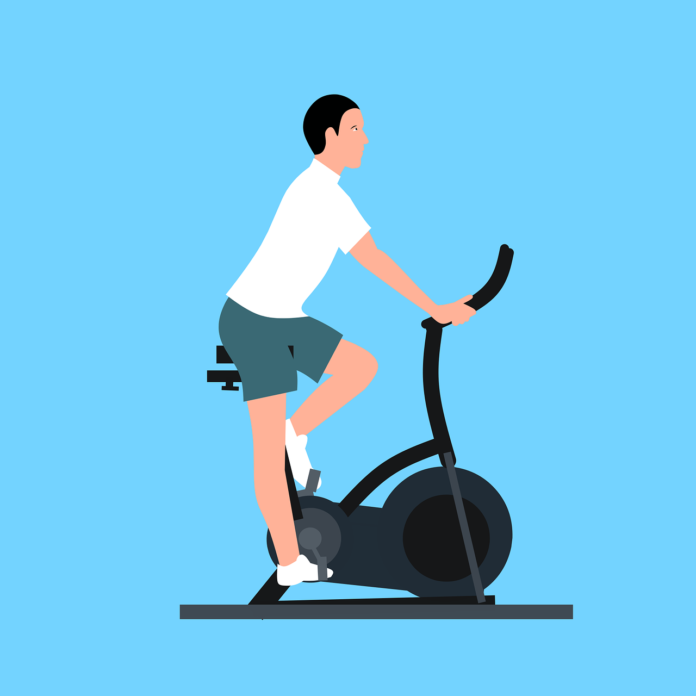Exercise and science have always had a deep-rooted connection to each other. Science can be used to form educated opinions on how to improve health. One example is the research into which supplements benefit our overall health, especially in conjunction with exercise. Jennifer Wilkinson, a kinesiology PhD candidate at UW working with professor Michaela C. Devries-Aboud, highlighted the importance of good nutrition combined with exercise, emphasizing that both are necessary for a healthy lifestyle.
“When you start to exercise you start to break down whatever you’ve stored, but you can also start breaking down muscle in a way that is designed to improve muscle mass provided you eat properly to be able to build that muscle,” Wilkinson said.
Aboud is a researcher from the department of kinesiology and health sciences at the University of Waterloo. She and Wilkinson are working on determining how the supplements TRIM 7 and MUSCLE 5 induce high-quality weight loss when combined with aerobic and resistance training. MUSCLE 5 helps increase muscle mass and TRIM 7 is designed to temporarily increase metabolism and antioxidants.
“High-quality weight loss is essentially reducing someone’s detrimental adipose tissue, so the fat tissue that we have stored primarily around our gut… while preserving and possibly increasing your skeletal muscle mass,” Wilkinson said.
Skeletal muscle is an essential component of weight loss both due to its high metabolic activity and its major role as a glucose deposit. These tissues improve insulin sensitivity, which makes increasing muscle mass while reducing fat mass an ideal weight loss strategy.
“What we see in typical weight loss is a reduction of body mass, but it doesn’t preserve muscle mass,” Wilkinson said, “which doesn’t improve our insulin sensitivity, so if you were insulin resistant in an obese state, weight loss would not improve insulin sensitivity.”
Aboud chose to engage the participants of her study in aerobic and resistance training exercises in combination with the supplements. These specific regimes were selected due to the improved insulin sensitivity that results from aerobic exercise and the muscle preservation from resistance training. However, Wilkinson noted that there is a difference in the impact of these exercises between sexes — the impact is greater in men.
“Aerobic training has been shown to improve insulin sensitivity and glucose handling, specifically in men,” Wilkinson said. “But it has been shown to improve insulin sensitivity somewhat in women, and [in] resistance training there is some insulin sensitizing effect, but it was primarily chosen for the muscle mass component.”
Women have historically been excluded from similar scientific studies, therefore this study is also a platform through which the different impacts of these supplements on men and women could be observed.
The study, which involved equal numbers of men and women, assigned participants to specific groups based on their fitness levels and skeletal muscle mass. Based on their groups, the men and women consumed the same supplements, with dosages altered based on their food intake. Wilkinson explained that because women are theoretically smaller than men, they typically consume less food.
This study is also impacted by the age of the participants. As women grow older, they go through menopause, and these hormonal changes must be taken into account. “Once you’ve hit the menopausal stage you have very little levels of estrogen or progesterone, you then are more similar to males than you were when you were menstruating,” Wilkinson said, adding that the estrogen influences many of the measures they examine to determine the impact of the study.
Additionally, age often results in a loss of muscle mass and an increase in weight, because changes in body composition make it easier for people to increase their adipose tissue mass. It also becomes more difficult for skeletal muscle to increase in size and respond to insulin. “The older you are, the less likely you are to respond,” Wilkinson said.
This study can be used as a preventative measure for diseases such as cardiovascular disease, diabetes and sarcopenia.“For preventative measures, we know that if you are becoming insulin resistant, you are getting into the prediabetic state and diabetes is a very prevalent condition,” Wilkinson said. “The idea is that if you can improve your insulin sensitivity before you get to a diabetic state then you are preventing diabetes in a specific population.”































